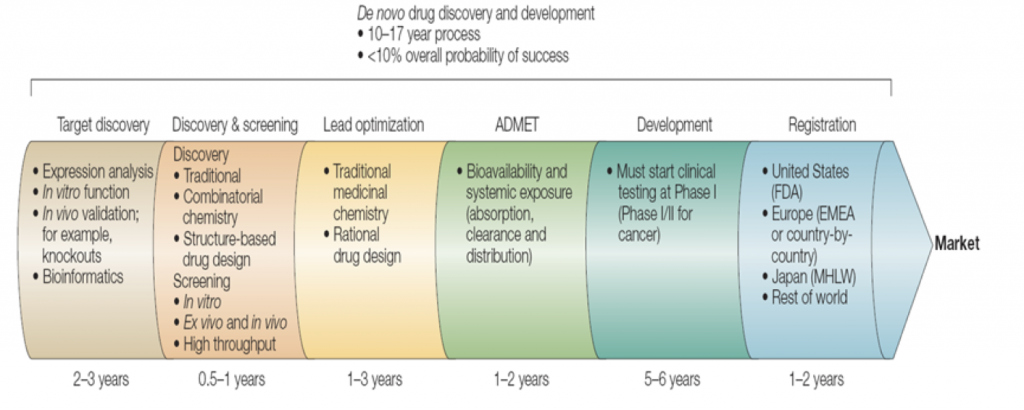Drug discovery
The first step in the drug discovery pipeline is the characterisation of the disease process and identification of drug (‘therapeutic’) targets. Here, a ‘target’ is defined as a protein or messenger RNA which, when modified by a drug, favourably affects the outcome of a disease.
In traditional drug discovery pipelines (Figure 6), less than 10% of candidate targets turn out to be valid after the investment of millions of dollars and six to seven years of work (5). More than 50% of drugs fail at phase II clinical trials due to the lack of efficacy, i.e. the drug is not harmful to humans, binds to the intended target and has drug-like properties (e.g. a reasonable half-life in the human body), but it does not significantly affect the disease.
